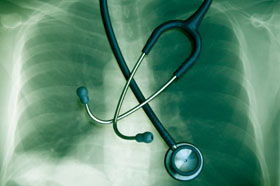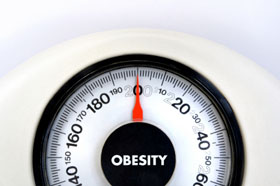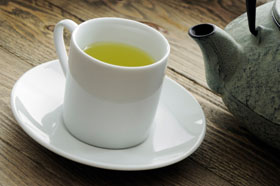A Taste of Green Tea: A Taste of Better Health

A recent addition to the growing number of scientific evidence supporting green tea shows that, aside from its well-known benefits, it also reduces levels of DNA damage.
Widely-believed to have originated from China, green tea has remained as one of the undisputable tea favourites. In the past, a notable pervasive belief regarding the well-loved beverage was that its health benefits are practically felt by those who drink it.¬† However, these ‚Äúbenefits‚ÄĚ were hardly substantiated by scientific evidence.
Over the years, green tea has enjoyed the popular reputation of being a folklore medicine ‚ÄĒ until it increasingly gained the attention and curiosity of scientists and researchers. Recent findings finally provide a scientific backbone behind its wide range of favourable effects on health maintenance and restoration. With its proven position as a credible and effective natural treatment method, the delicious treat, especially when taken along with other natural health-protective foods and supplementation, redefines ‚Äúdelicious beverage‚ÄĚ in a healthy manner.
Recent Human and In Vitro Study: Green Tea Protects from DNA Damage
The new study conducted by a team of experts from the Hong Kong Polytechnic University shows that by drinking green tea daily within a month, human DNA has higher chances of getting damage protection. Results show that the beverage consumption entailed reduction of DNA damage levels by a significant 20%. According to the researchers, the protective capacity and activity points to the green tea’s high antioxidant components and compounds.
Published in the British Journal of Nutrition, the significant results of its genoprotective effects further support the notion that green tea is a ‚Äúfunctional food‚ÄĚ; rather than being a mere, commonplace, and delicious beverage. Both human supplementation trial and in vitro study confirmed the results.
The study is a significant addition to the body of supporting scientific evidence towards the potential and actual benefits provided by green tea contents, notably by its polyphenol components. The major health benefits proven and discovered through scientific research include Alzheimer’s disease prevention, reduction of cancer risks, and supplementary aid to weight management for more optimal results.
Essential Risk-reducing Contents of Green Tea
In order to have a better grasp of how strongly potent green tea is when it comes to risk-reduction, prevention, and health restoration; it is wise to have a more detailed look at its beneficial contents.
Flavonoids, Polyphenols, and Antioxidants
Possessing antioxidant roles, Flavonoids are highly concentrated in green tea. The high presence level renders the beverage capable of seizing and decapitating one of the leading potential causes of cell damage, and severe disease development:  free radicals or unstable molecules. Antioxidants found in green tea are higher than those in black tea due to the added processes that black tea requires. As such, it is unsurprising to know that instant and highly-processed iced teas already contain insignificant amounts of antioxidants.
Epigallocatechin gallate, or EGCG, accounts for more than half of the content of catechins – an antioxidant which is 20 times more powerful and potent than vitamin C. The EGCG is widely believed to be one of the tea‚Äôs vital contents that aid in anti-cancer and antioxidant activities. It inhibits the growth of cancer cells, while it simultaneously destroys currently existing cancer cells; and healthy cells are left undamaged. Reportedly, this antioxidant can also prevent abnormal blood clot-formation ‚ÄĒ ¬†an activity linked to one of the potent causes of stroke and heart attacks, called thrombosis.
A More Detailed Look on the Health Benefits of Green Tea
1. In Relation to DNA Damage
The study has shown the capacity of green tea in the reduction of DNA damage. It is important, then, to at least briefly know why this activity benefits human health.
DNA damage is inclined to cause immunosuppression, a high risk factor for certain types of cancer such as skin cancer. Based on a certain study on green tea polyphenols and skin cancer, the polyphenols reportedly are capable of blocking immunosuppression caused by exposure to Ultraviolet Radiation. The said study was applied to mice, and findings further show that polyphenol consumption has a long term protective effect, even after the mice have stopped polyphenol intake.
Furthermore, DNA damage and modifications can cause cellular dysfunction, and thus contribute to the complications of diabetes, such as diabetic nephropathy.
2. In Relation to Cancer
Polyphenols found in green tea are highly capable of stimulating apoptosis, a process that renders cancerous cells to commit suicide. Furthermore, it prohibits the progression of cell cycling, or cell division and replication, in abnormal or cancerous cells while sparing normal, healthy cells from damage. As discussed earlier, the anti-cancer and anti-carcinogen activity is significantly linked to the EGCG. However, it must be clarified that the remarkable antioxidant capabilities of green tea contents should be partnered with other potent sources of antioxidants. Employing antioxidant-source varieties and supplementation will heighten and optimize effects.
A study conducted by I-Hsin Lin of Chung Shan Medical University shows that polyphenols are capable of inhibiting tumorigenesis, a term that refers to tumour production. With lung cancer as Taiwan’s leading cause of all types of cancer-related deaths, and with the difficult struggle of quitting the smoking habit, the study provides benefits to smokers, in the sense that smoking-induced carcinogenesis can be regulated by consuming healthy amounts of green tea.
3. In Relation to Alzheimer’s and Other Neurodegenerative Diseases
Brain cell damage appears to develop through several detrimental factors, such as excessive inflammation and increased iron accumulation levels. These cause and contribute to increasing production of free radicals, which in turn exhaust and deplete antioxidant supplies in the brain.
Fortunately, research shows that catechins found in green tea not only serve as powerful antioxidants since these also cause and trigger various cell mechanisms for neuroprotection including activation of survival genes, modulation of mitochondrial function, and iron chelation.
EGCG has been proven capable of acting as an iron chelator, which stops iron from aiding the production of free radicals. It also boosts and stimulates quality operations of superoxide dismutase (SOD) and catalase ‚ÄĒ two antioxidant enzymes that further help in damage control caused by detrimental free radical activities effects.
4. In Relation to Weight Management
Green tea catechins also help weight loss success and efficiency. A conducted study published in the Journal of Nutrition reveals that green tea consumption enhances circulation of Free Fatty Acids (FFA), maintain triglyceride levels, and helps promote the loss of abdominal fat due to exercising.
The various and diverse health benefits of green tea show its multi-faceted role as a credible and effective natural treatment method. Indeed, green tea is no longer loved by health-conscious people for its light and luscious taste: It provides more depth to enjoyable beverage-drinking by adding ‚Äúhealthy‚ÄĚ to it.
Sources
nutraingredients.com
whfoods.com
paktribune.com
nccam.nih.gov
diabetes.diabetesjournals.org
cancer.gov
truehealth.org
nutraingredients.com
freeiln.com
Posted: September 11th, 2010 under antioxidants, Green Tea.
Tags: green tea reduces DNA damage, health benefits of green tea, recent studies on green tea
Comments: none

















